The Correspondence between Large Pressure Fluctuations and Runway Wind Shear: The Event on 12 December 2019 at Songshan Airport, Taipei
Abstract
:1. Introduction
2. Data and Methodology
3. Results and Analysis
3.1. Synoptic Environment
3.2. Surface Wind at Songshan Airport
3.3. Large Pressure Fluctuations and Runway Wind Shear
4. Discussion
5. Conclusions and Future Works
Author Contributions
Funding
Institutional Review Board Statement
Informed Consent Statement
Data Availability Statement
Acknowledgments
Conflicts of Interest
References
- Fujita, T.T. The Downburst, Microburst and Macroburst. University of Chicago, SMRP Research Paper 210. 1985. 122p. Available online: https://pi.lib.uchicago.edu/1001/cat/bib/684175 (accessed on 27 November 2021).
- McCarthy, J.; Serafin, R.; Wilson, J.; Evans, J.; Kessinger, C.; Mahoney, W.P., III. Addressing the microburst threat to aviation. Research-to-operation success story. Bull. Am. Meteorol. Soc. 2022, 103, E2845–E2861. [Google Scholar] [CrossRef]
- Skamarock, W.C.; Klemp, J.B.; Dudhia, J.; Gill, D.O.; Barker, D.M.; Wang, W.; Powers, J.G. A Description of the Advanced Research WRF Version 2; NCAR Tech. Note NCAR/TN-4681STR; University Corporation for Atmospheric Research: Boulder, CO, USA, 2005; 88p. [Google Scholar] [CrossRef]
- Japan Meteorological Agency. Numerical Weather Prediction Models. Outline of the Operational Numerical Weather Prediction at the Japan Meteorological Agency, JMA, Japan; 2022; pp. 51–148. Available online: https://www.jma.go.jp/jma/jma-eng/jma-center/nwp/outline2022-nwp/index.htm (accessed on 1 November 2022).
- European Centre for Medium-Range Weather Forecasts. IFS Documentation CY48R1–Part IV: Physical Processes. ECMWF/IFS Documentation CY48R1. 2023. 266p. Available online: https://www.ecmwf.int/en/publications/ifs-documentation (accessed on 19 September 2023).
- Wilson, J.W.; Wakimoto, R.M. The discovery of the downburst: T. T. Fujita’s contribution. Bull. Am. Meteorol. Soc. 2001, 82, 49–62. [Google Scholar] [CrossRef]
- Shreffler, J.H.; Binkowski, F.S. Observations of pressure jump lines in the Midwest, 10–12 August 1976. Mon. Weather Rev. 1981, 109, 1713–1725. [Google Scholar] [CrossRef]
- Wakimoto, R.M. The life cycle of thunderstorm gust fronts as viewed with Doppler radar and rawinsonde data. Mon. Weather Rev. 1982, 110, 1060–1082. [Google Scholar] [CrossRef]
- ICAO. Manual on Low-Level Wind-Shear. Doc. 9817-AN/449, 3 May 2014—First Edition—2005. 2014, pp. 5–8. Available online: https://skybrary.aero/bookshelf/doc-9817-manual-low-level-wind-shear. (accessed on 13 December 2021).
- Katul, G.G.; Albertson, J.D.; Parlange, M.B.; Hsieh, C.I.; Conklin, P.S.; Sigmon, J.T.; Knoerr, K.R. The “inactive” eddy motion and the large-scale turbulent pressure fluctuations in the dynamic sublayer. J. Atmos. Sci. 1996, 53, 2512–2524. [Google Scholar] [CrossRef]
- Vianai, S.; Yaguei, C.; Maqueda, G.; Morales, G. Study of the surface pressure fluctuations generated by waves and turbulence in the nocturnal boundary layer during SABLES 2006 field campaign. Física Tierra 2007, 19, 55–71. [Google Scholar]
- Wei, Z.; Zhang, H.; Ren, Y.; Li, Q.; Cai, X.; Song, Y.; Kang, L. Study on the characteristics of the pressure fluctuations and their contribution to turbulence kinetic energy. Atmos. Res. 2021, 258, 105634. [Google Scholar] [CrossRef]
- Johnson, R.H.; Mapes, B.E. Mesoscale processes and severe convective weather. In Severe Convective Storms; American Meteorological Society: Boston, MA, USA, 2001; pp. 71–122. [Google Scholar] [CrossRef]
- Pu, C.-P. The low-level wind shear system and the diagnosis of low-level wind shear at Songshan Airport in Taiwan. Atmos. Sci. 2003, 31, 181–198, (In Chinese with English Abstract). [Google Scholar]
- Pu, C.-P.; Hsu, M.-L.; Yu, F. A study of “Soulik” Typhoon and low-level wind shear statistics at Sung-Shan Airport during 12–13 July 2013. Atmos. Sci. 2015, 43, 27–46, (In Chinese with English Abstract). [Google Scholar]
- Pu, C.-P.; Hsu, M.-L. A case study of the low-level wind shear at Songshan Airport influenced by Typhoon Fitow. Avia. Wea. 2016, 25, 30–50. (In Chinese) [Google Scholar]
- Pu, C.-P.; Hsu, M.-L.; Yu, F.; Liu, L. A case study of the closed low, cold front, thunderstorm and low-level wind shear at Sung-Shan Airport. J. Avia. Saf. Manag. 2014, 1, 227–243. (In Chinese) [Google Scholar]
- Pu, C.-P.; Lin, C.-J. A study of the runway wind shear and large pressure fluctuation of strong northeast monsoon at Songshan Airport. Avia. Wea. 2021, 36, 19–30. (In Chinese) [Google Scholar]
- Pu, C.-P.; Lin, C.-J. A study on the diurnal variation of the low-level wind shear and runway pressure fluctuation in Songshan Airport from 2010 to 2014. Atmos. Sci. 2017, 45, 261–280, (In Chinese with English Abstract). [Google Scholar]
- Pu, C.-P.; Lin, C.-J. An analysis with the relation to missing approach cases and pressure fluctuation at Matsu Nangan Airport. J. Avia. Saf. Manag. 2017, 4, 65–78. (In Chinese) [Google Scholar]
- Pu, C.-P.; Lin, C.-J. A study on the correlation between runway wind shear and pressure fluctuation occur in Matsu Nangan Airport from 2014 to 2016. J. Avia. Saf. Manag. 2018, 5, 42–55. (In Chinese) [Google Scholar]
- Barber, G.M. Elementary Statistics for Geographers; The Guilford Press: New York, NY, USA, 1988; 513p, ISBN 0-89862-777-X. [Google Scholar]
- Schaefer, J.T. The critical success index as an indicator of warning skill. Weather Forecast. 1990, 5, 570–575. [Google Scholar] [CrossRef]
- Wilks, D.S. Statistical Methods in the Atmospheric Sciences, 3rd ed.; Academic Press: Cambridge, MA, USA, 2011; 704p, ISBN 9780123850225. [Google Scholar]
- Stevens, B.; Lenschow, D.H. Observations, experiments, and large eddy simulation. Bull. Am. Meteorol. Soc. 2001, 82, 283–294. [Google Scholar] [CrossRef]
- Moeng, C.-H.; Sullivan, P.P. Large eddy simulation. In Encyclopedia of Atmospheric Sciences; Holton, J.R., Curry, J.A., Pyle, J.A., Eds.; Academic Press: Cambridge, MA, USA, 2003; pp. 1140–1150. [Google Scholar]
- De Roode, S.R.; Duynkerke, P.G.; Jonker, H.J.J. Large-eddy simulation: How large is large enough? J. Atmos. Sci. 2004, 61, 403–421. [Google Scholar] [CrossRef]
- Mirocha, J.D.; Lundquist, K.A. Assessment of vertical mesh refinement in concurrently nested large-eddy simulations using the Weather Research and Forecasting Model. Mon. Weather Rev. 2017, 145, 3025–3048. [Google Scholar] [CrossRef]
- Rozoff, C.M.; Nolan, D.S.; Bryan, G.H.; Hendricks, E.A.; Knievel, J. Large-eddy simulations of the tropical cyclone boundary layer at landfall in an idealized urban environment. J. Appl. Meteorol. Climatol. 2023, 62, 1457–1478. [Google Scholar] [CrossRef]
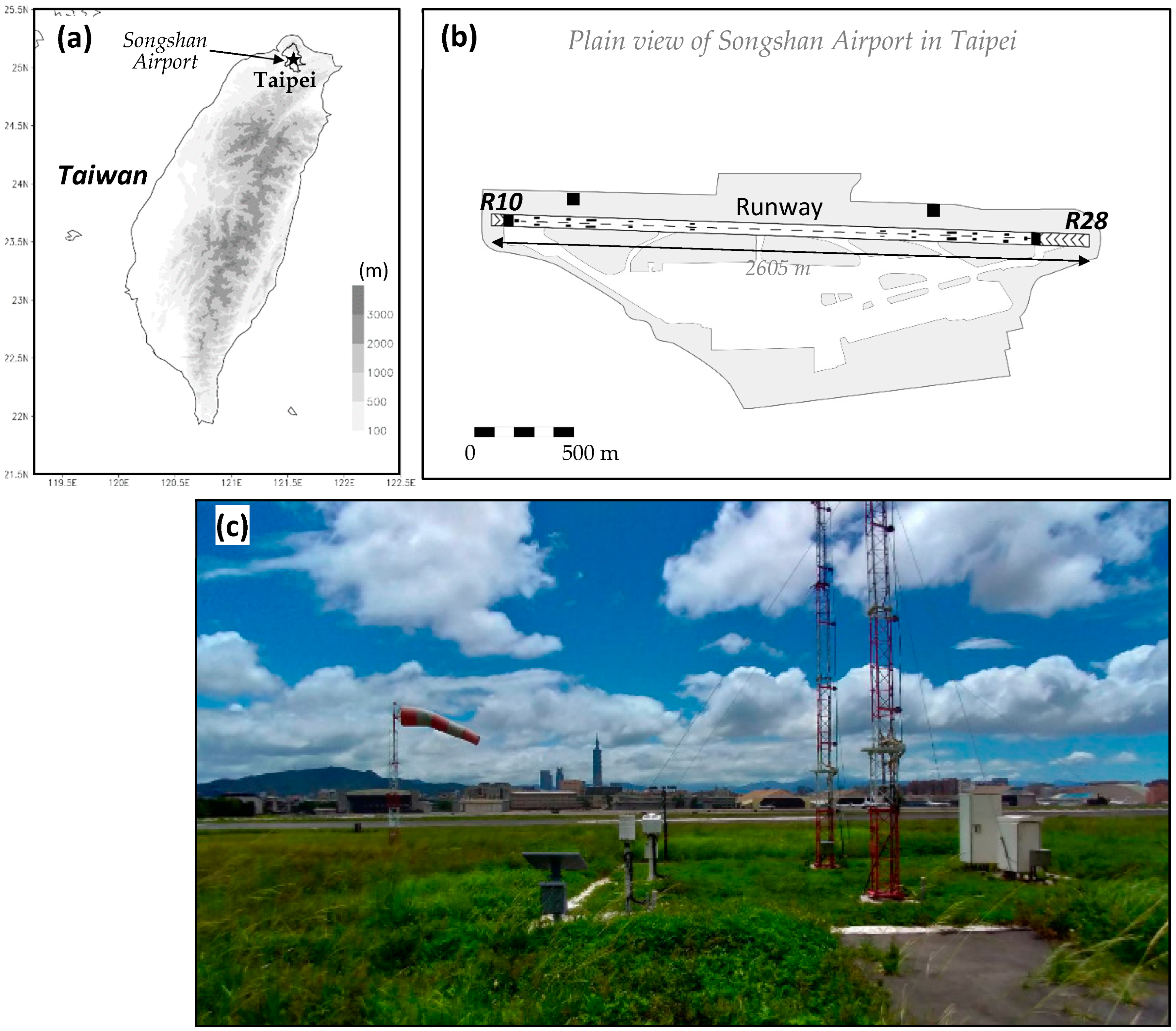
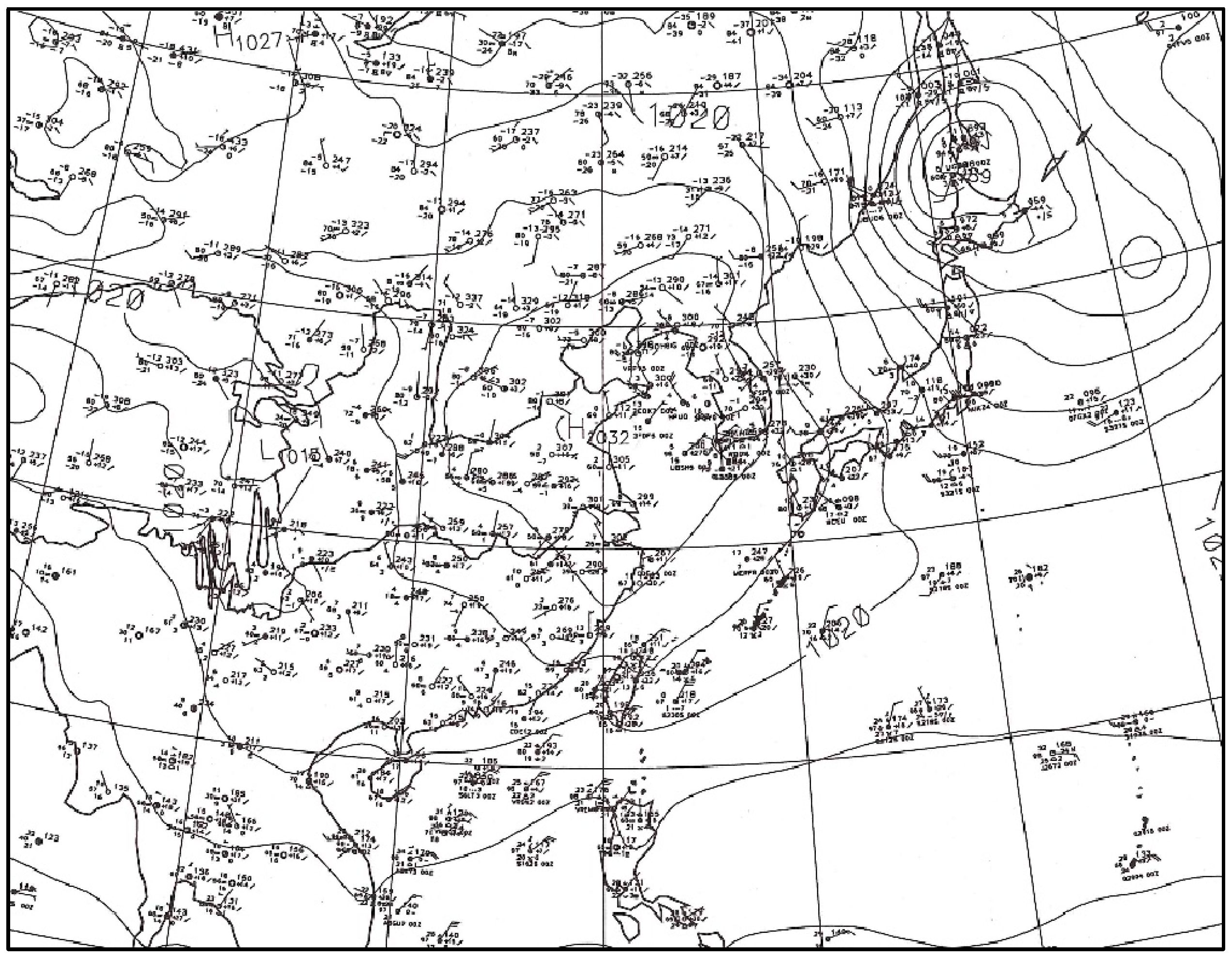
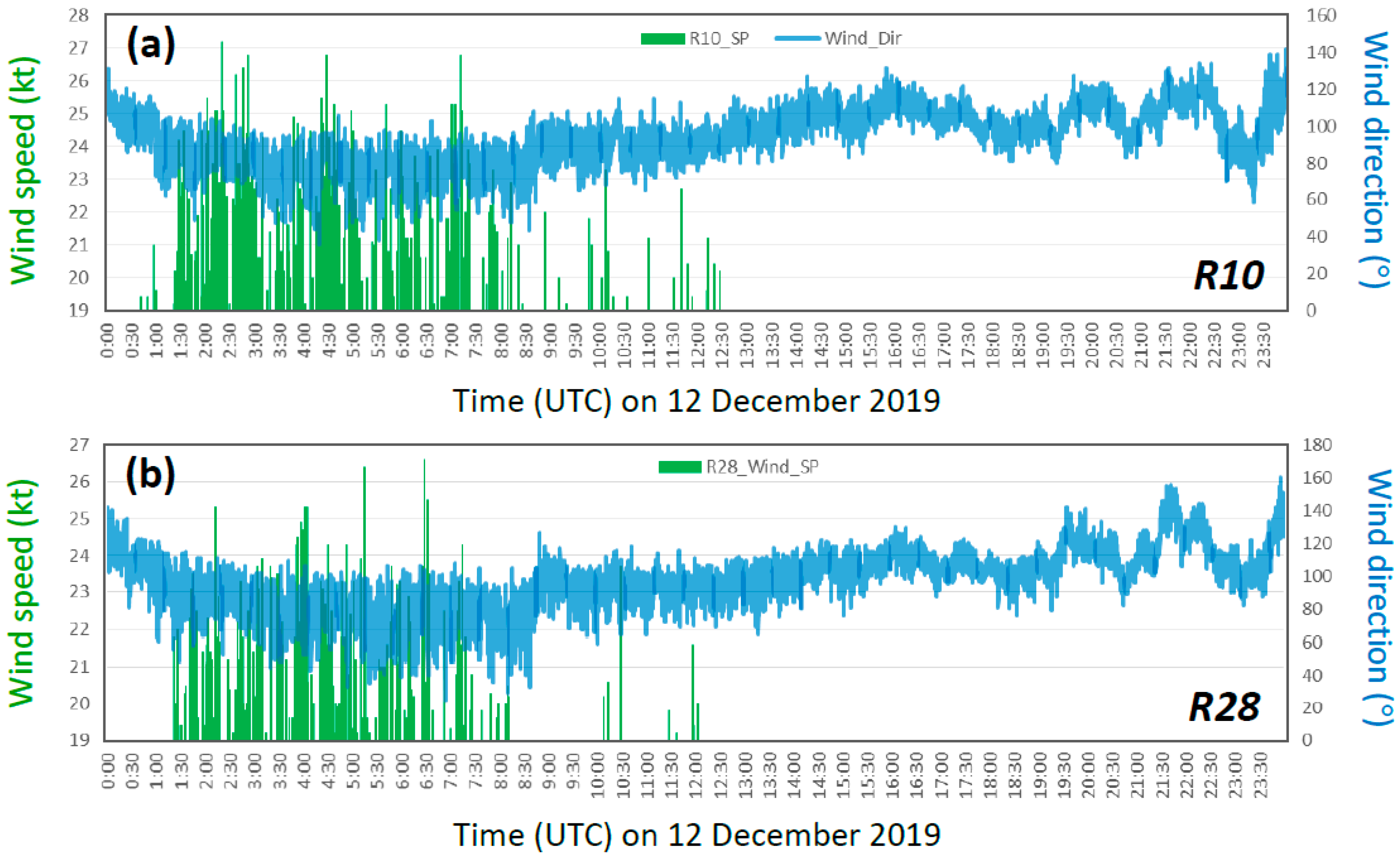
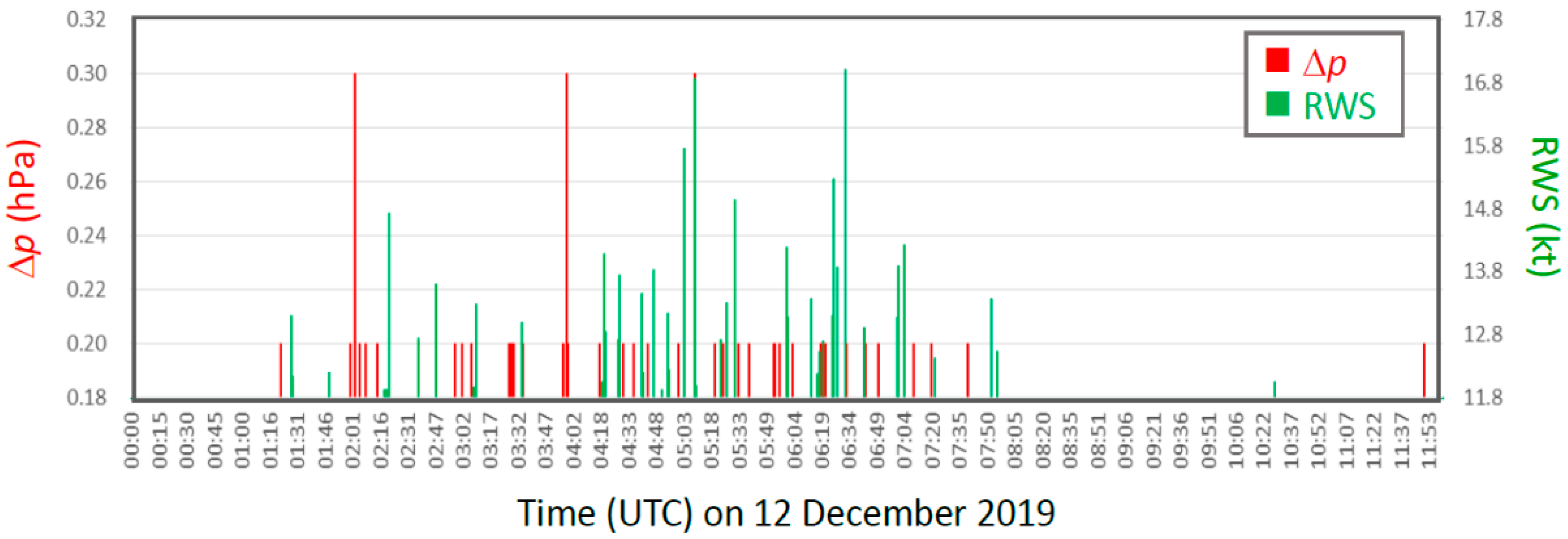
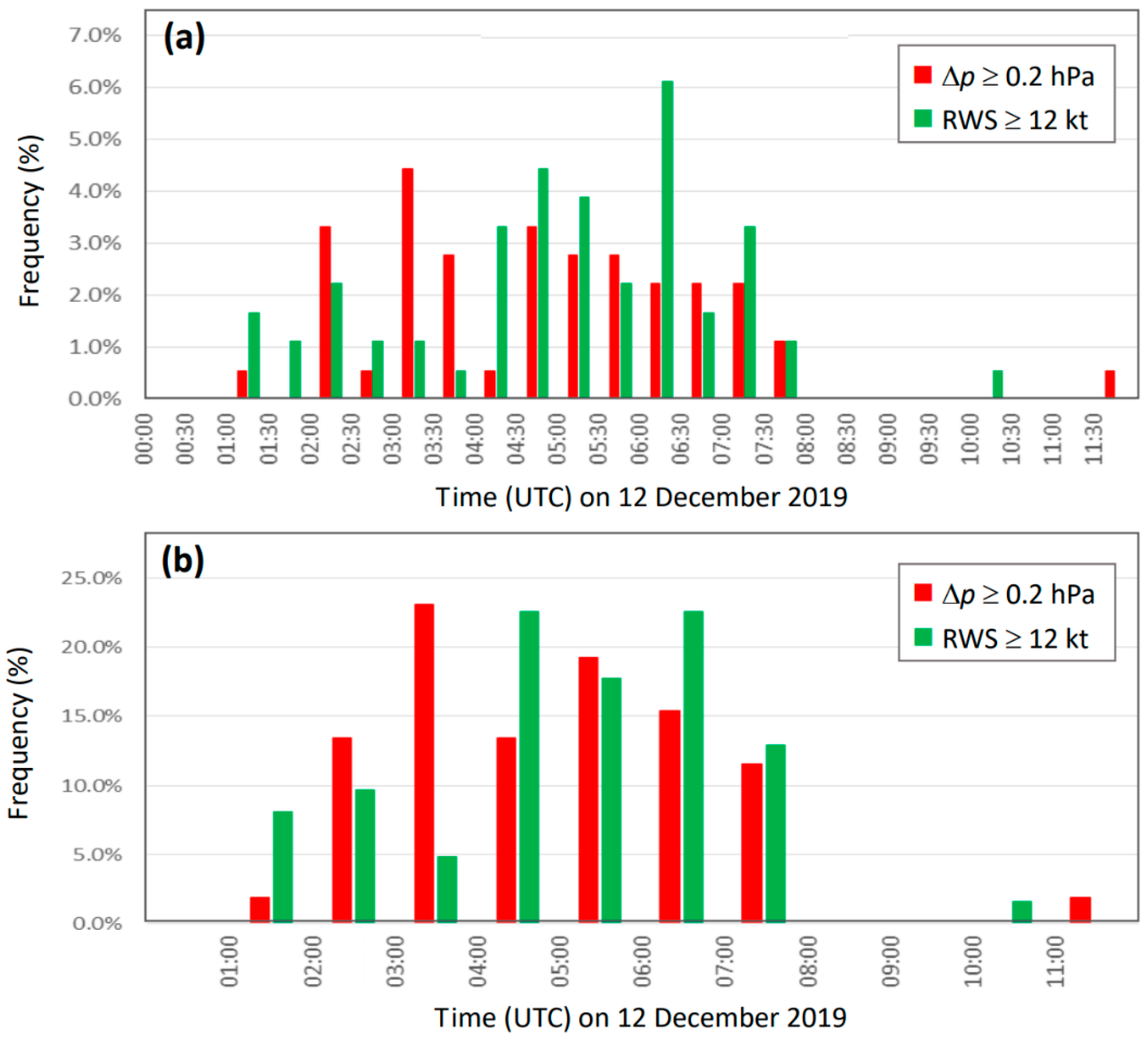
| Time Interval | R10 | R28 | ||
|---|---|---|---|---|
| (UTC) | Times | Proportion (%) | Times | Proportion (%) |
| 0000–0100 | 1 | 0.2% | 0 | 0.0% |
| 0100–0200 | 43 | 8.9% | 23 | 9.0% |
| 0200–0300 | 147 | 30.6% | 56 | 22.0% |
| 0300–0400 | 43 | 8.9% | 39 | 15.3% |
| 0400–0500 | 82 | 17.0% | 53 | 20.8% |
| 0500–0600 | 53 | 11.0% | 33 | 12.9% |
| 0600–0700 | 44 | 9.1% | 22 | 8.6% |
| 0700–0800 | 48 | 10.0% | 21 | 8.2% |
| 0800–0900 | 5 | 1.0% | 3 | 1.2% |
| 0900–1000 | 4 | 0.8% | 0 | 0.0% |
| 1000–1100 | 5 | 1.0% | 3 | 1.2% |
| 1100–1200 | 6 | 1.2% | 1 | 0.4% |
| Total | 481 | 100% | 254 | 100% |
| Time Interval | LPF | RWS | ||
|---|---|---|---|---|
| (UTC) | Times | Proportion (%) | Times | Proportion (%) |
| 0000–0100 | 0 | 0.0% | 0 | 0.0% |
| 0100–0200 | 1 | 1.9% | 5 | 8.1% |
| 0200–0300 | 7 | 13.5% | 6 | 9.7% |
| 0300–0400 | 12 | 23.1% | 3 | 4.8% |
| 0400–0500 | 7 | 13.5% | 14 | 22.6% |
| 0500–0600 | 10 | 19.2% | 11 | 17.7% |
| 0600–0700 | 8 | 15.4% | 14 | 22.6% |
| 0700–0800 | 6 | 11.5% | 8 | 12.9% |
| 0800–0900 | 0 | 0.0% | 0 | 0.0% |
| 0900–1000 | 0 | 0.0% | 0 | 0.0% |
| 1000–1100 | 0 | 0.0% | 1 | 1.6% |
| 1100–1200 | 1 | 1.9% | 0 | 0.0% |
| Total | 52 | 100.0% | 62 | 100.0% |
| Times | Total | Accuracy | H | CN | M | FA | |||||
|---|---|---|---|---|---|---|---|---|---|---|---|
| Hr | Hr | Fract. | Hr | Fract. | Hr | Fract. | Hr | Fract. | Hr | Fract. | |
| ≥1 | 12 | 10 | 83.3% | 7 | 58.3% | 3 | 25.0% | 1 | 8.3% | 1 | 8.3% |
| ≥5 | 12 | 10 | 83.3% | 5 | 41.7% | 5 | 41.7% | 1 | 8.3% | 1 | 8.3% |
| ≥10 | 12 | 9 | 75.0% | 1 | 8.3% | 8 | 66.7% | 2 | 16.7% | 1 | 8.3% |
Disclaimer/Publisher’s Note: The statements, opinions and data contained in all publications are solely those of the individual author(s) and contributor(s) and not of MDPI and/or the editor(s). MDPI and/or the editor(s) disclaim responsibility for any injury to people or property resulting from any ideas, methods, instructions or products referred to in the content. |
© 2023 by the authors. Licensee MDPI, Basel, Switzerland. This article is an open access article distributed under the terms and conditions of the Creative Commons Attribution (CC BY) license (https://creativecommons.org/licenses/by/4.0/).
Share and Cite
Pu, C.-P.; Wang, C.-C. The Correspondence between Large Pressure Fluctuations and Runway Wind Shear: The Event on 12 December 2019 at Songshan Airport, Taipei. Atmosphere 2023, 14, 1773. https://doi.org/10.3390/atmos14121773
Pu C-P, Wang C-C. The Correspondence between Large Pressure Fluctuations and Runway Wind Shear: The Event on 12 December 2019 at Songshan Airport, Taipei. Atmosphere. 2023; 14(12):1773. https://doi.org/10.3390/atmos14121773
Chicago/Turabian StylePu, Chin-Piao, and Chung-Chieh Wang. 2023. "The Correspondence between Large Pressure Fluctuations and Runway Wind Shear: The Event on 12 December 2019 at Songshan Airport, Taipei" Atmosphere 14, no. 12: 1773. https://doi.org/10.3390/atmos14121773
APA StylePu, C.-P., & Wang, C.-C. (2023). The Correspondence between Large Pressure Fluctuations and Runway Wind Shear: The Event on 12 December 2019 at Songshan Airport, Taipei. Atmosphere, 14(12), 1773. https://doi.org/10.3390/atmos14121773






